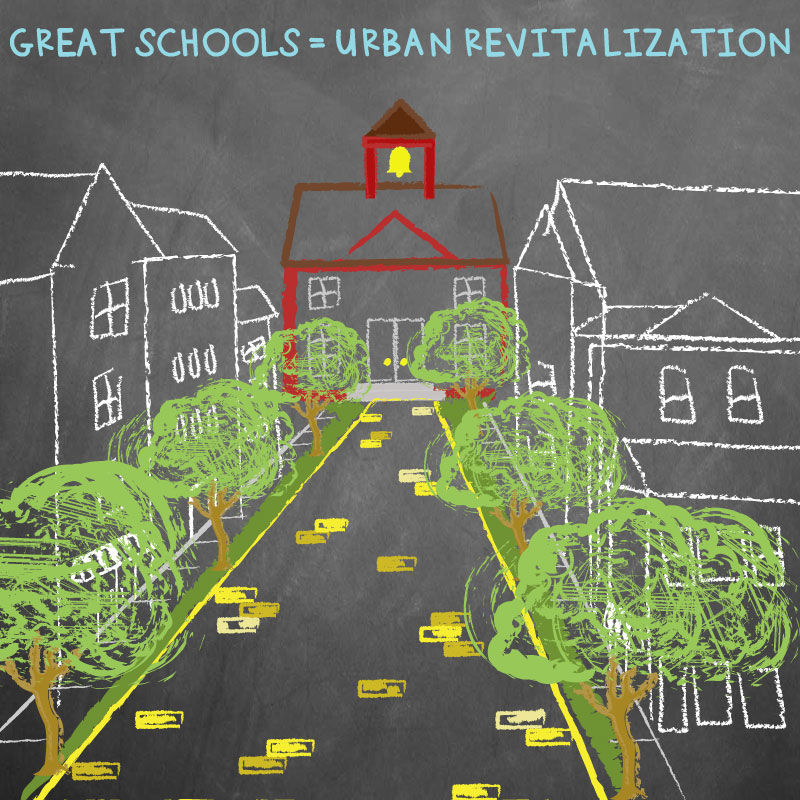As planners and urban designers, much of our work is dedicated to transforming areas of concentrated poverty into neighborhoods of growth and opportunity. These distressed neighborhoods often have a number of factors in common, such as dilapidated housing, failing schools, and limited access to grocery stores, parks, and other neighborhood amenities.
The tendency has been to deal with these issues separately, creating distinct approaches to neighborhood revitalization. Planners and architects design mixed-income housing, neighborhood organizations work on rebuilding the social and economic fabric, while parents, community leaders, and education advocates explore opportunities to improve schools. However, even if a neighborhood's housing and socio-economic conditions improve, that community might still struggle unless educational disparity is adequately addressed.
Good schools are critical to attracting middle-income families who can contribute to neighborhood reinvestment and stabilization. A great public school can lure new families while also improving the educational opportunities of existing residents. So when we begin the neighborhood revitalization process, it might be best to address schools first. The White House is starting to understand this connection and has promoted a new, more integrated solution to neighborhood revitalization through HUD's Choice Neighborhoods program.

